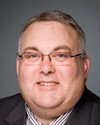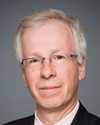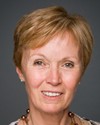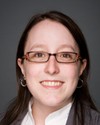Thank you, Mr. Chair.
I'm not sure I'm going to need the entire five minutes. I can assure you, though, that as a member of this place for seven years now, sitting at this end of the committee table gives a completely different perspective.
Mr. Chair, the federal riding of Wetaskiwin is the riding I've had the privilege to represent for the last seven years. I first came here in 2006.
The riding of Wetaskiwin has existed in Alberta since the beginning of Confederation. Wetaskiwin is one of Alberta's original five cities and has been a mainstay in the political scene in Alberta since that time.
The recent changes that have been proposed by the Federal Electoral Boundaries Commission for Alberta basically propose that an electoral district called Wetaskiwin cease to exist for the first time since Confederation.
Based on their deliberations and their judgment, the riding is basically being split into three different pieces. The west country of the Wetaskiwin riding goes to the existing riding of Yellowhead. The northern portion of the Wetaskiwin riding, excluding the first nations band, goes into an Edmonton—Wetaskiwin riding. The southern portion of the riding goes into a Red Deer split riding, with communities like Lacombe and Ponoka and the first nations.
This does pose a lot of questions from my constituents, and it's on their behalf that I'm here. Whether it's been at coffee shops or at town hall meetings put on by chambers of commerce or other interested groups, virtually no one can understand, in the constituency that I currently represent, why the boundary commission is doing what it is doing, so I'm making those representations, as I said, on their behalf.
If we take a look at some of the headlines in the papers that had gone to some of the boundary commission meetings, we see things like “Silencing the rural voice”. We see things like “Wetaskiwin won't matter in [the new] riding”. We see things like “Federal riding commission's report sparks outrage”.
A number of individuals and organizations appeared before the commission. I think about 19 from the riding of Wetaskiwin alone made presentations before the boundary commission, all making requests. Examples include a county or a municipality saying that they wanted their entire county within the jurisdictional boundary of at least one riding.
In terms of the difference between the first set of maps and the second set of maps, the commission did come back and make some very minor changes. I did appreciate that, in terms of keeping the County of Wetaskiwin whole, but that still leaves the counties of Ponoka and Lacombe, which were previously in one jurisdiction federally.
Mr. Chair, I know that you represent a rural area as well. If you know what county you live in, you know what riding you live in. That's a big deal when it comes to election time.
There's no way we can do massive changes to the current set of boundaries, but when it comes to sticking up for some of the smaller communities, we have an east-west trading corridor there, along Highway 11 and Highway 53. Communities like Rocky Mountain House and Rimbey have associations with Sylvan Lake and Lacombe and Ponoka. They don't have much to do with communities like Grande Cache, Hinton, and Edson from an economic or political perspective.
The reality is that our province is growing, and changes needed to be made. I'm here basically to ask for some changes in the boundaries, where I want to include....
I believe you've seen a map from the previous presenters; I am in agreement with what's happened. I think these are reasonable changes that are being asked for in terms of the rural areas and the northern part of the province of Alberta. The bands at Hobbema consist of some 16,000 people; if we were to be able to repatriate communities such as Rimbey and so on into the Red Deer north riding, as outlined on the map, we would be able to also share some of the first nations territory with the Edmonton—Wetaskiwin riding.
Both the communities of Ponoka, which would be in the Red Deer north riding, for lack of better words, and the Edmonton—Wetaskiwin riding.... Wetaskiwin, Ponoka, and Hobbema have always been in the same riding together. To share some of that first nations territory in each of those ridings only seems to make sense. It would keep those synergies and activities together where they have commonality.
The bands on the southern part of the reserve would be closer to Ponoka. The bands on the northern part of the reserve block of lands would be dealing more closely with Wetaskiwin, so that seems to make sense.
I believe you guys have seen the map. I'm in agreement with it, and I'm hoping that the commission is as well.
There's only other thing I would ask, given the history in the area, in regard to the term “Wolf Creek”. Wolf Creek is a small creek that flows through Lacombe into the Battle River. The Battle River runs for quite a distance throughout Alberta and has been used as a federal riding name before. I'm not suggesting that, but Wolf Creek is very much unknown in terms of its geographic location. It's more commonly known for its association to a school district, and I believe it might cause some confusion if the riding were to be called “Red Deer—Wolf Creek”.
Father Albert Lacombe is the namesake of the second city in that riding, which would be made up of the northern half of Red Deer and the City of Lacombe, and he has done extensive work there. There are great historical reasons that I think the riding should not be called Red Deer—Wolf Creek. It should be called Red Deer—Lacombe, reflecting the two largest centres and a great part of our history in that part of central Alberta.










